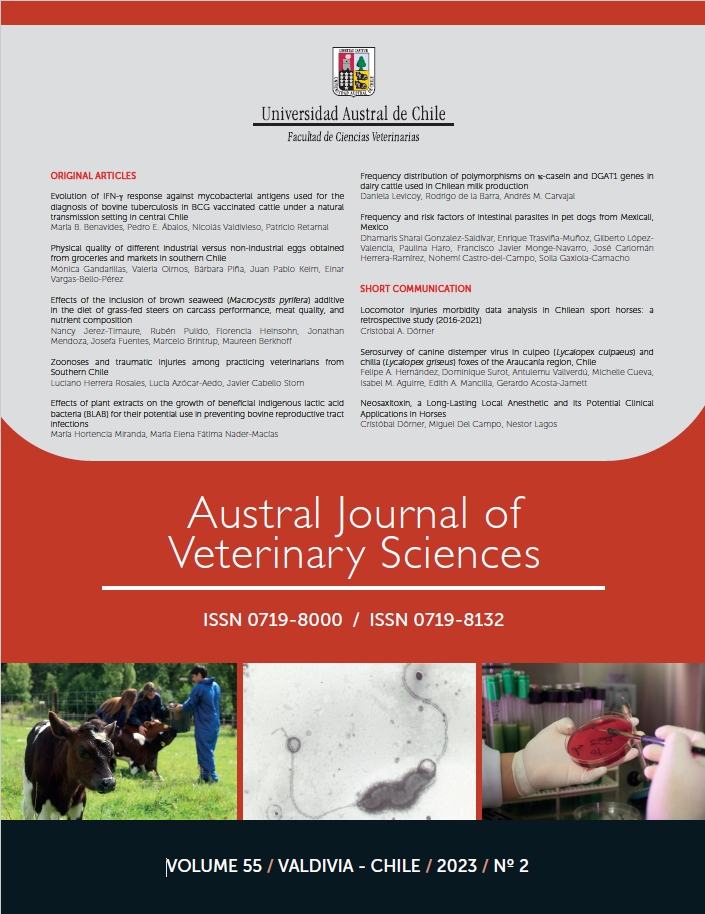Locomotor injuries morbidity data analysis in Chilean sport horses: a retrospective study (2016-2021)
Conteúdo do artigo principal
Resumo
The equine industry in Chile is small but constantly growing, being the Chilean Rodeo the most important discipline. Problems associated to the musculoskeletal system are the most frequent condition in the equine veterinary practice. Economic losses for the equine industry associated to injuries related to the locomotor system are significant and have been estimated in different parts of the world. Five hundred and eighty-one (581) Chilean purebred horses (Caballo Raza Chilena) performing or training for Chilean Rodeo discipline fulfilled the inclusion criteria. Results showed that in Chilean purebred horses, forelimbs injuries were recorded in 73.1% and hindlimbs 26.9% being a statistically significant difference (P = 0.001). Unilateral lameness was the most frequent situation seen in 74.9% (n=424), bilateral lameness was observed in 21.7% (n=102) and lameness in 3 or more areas was recorded in 9.5% of horses (n=55). When comparing frequency of distribution between right and left sides, no differences were observed between forelimbs (P = 0.645) or hindlimbs (P = 0.853). The forelimb digit (hoof, pastern, and fetlock) had a prevalence of 59.6%. When specific diagnoses were recorded the most prevalent causes of lameness in Chilean purebreds were navicular disease (12.9%), fetlock osteoarthritis (11.9%) and distal tarsal joints osteoarthritis (11.7%). In conclusion, due to the activity and specific physical demands suffered by Chilean Rodeo horses, veterinarians must be familiar with injuries affecting Chilean sport horses, as the morbidity of musculoskeletal injuries varies drastically between different disciplines.

